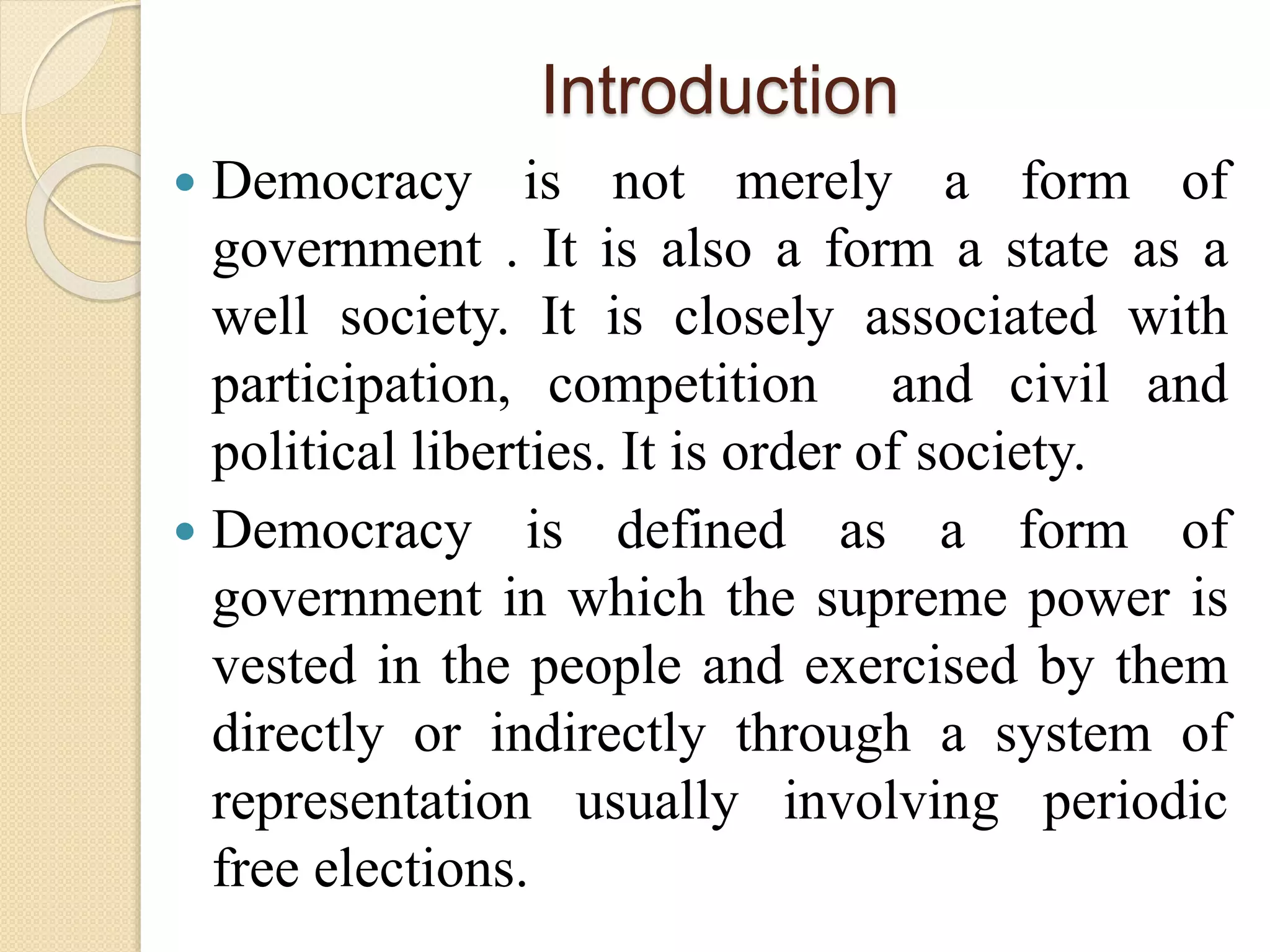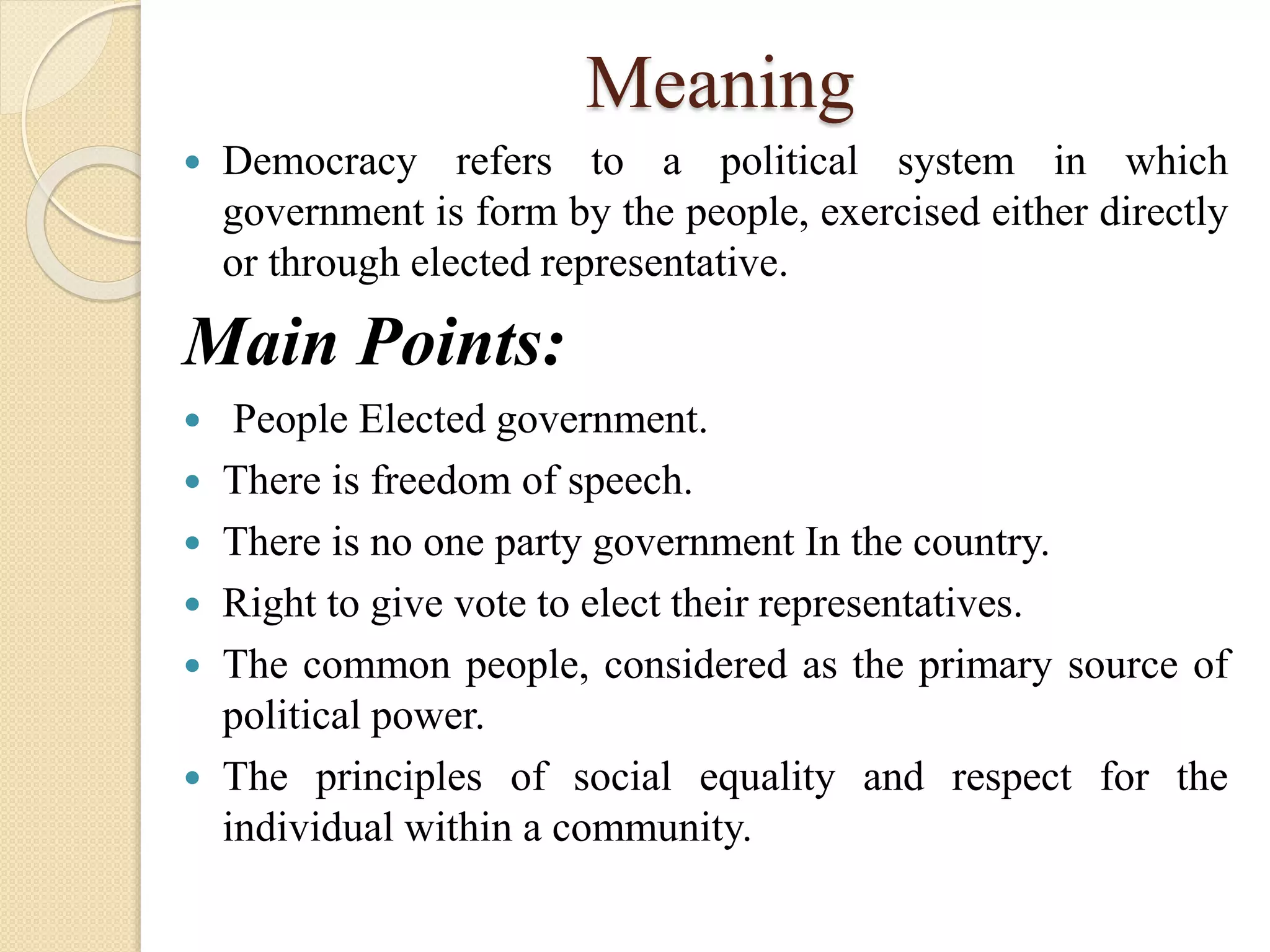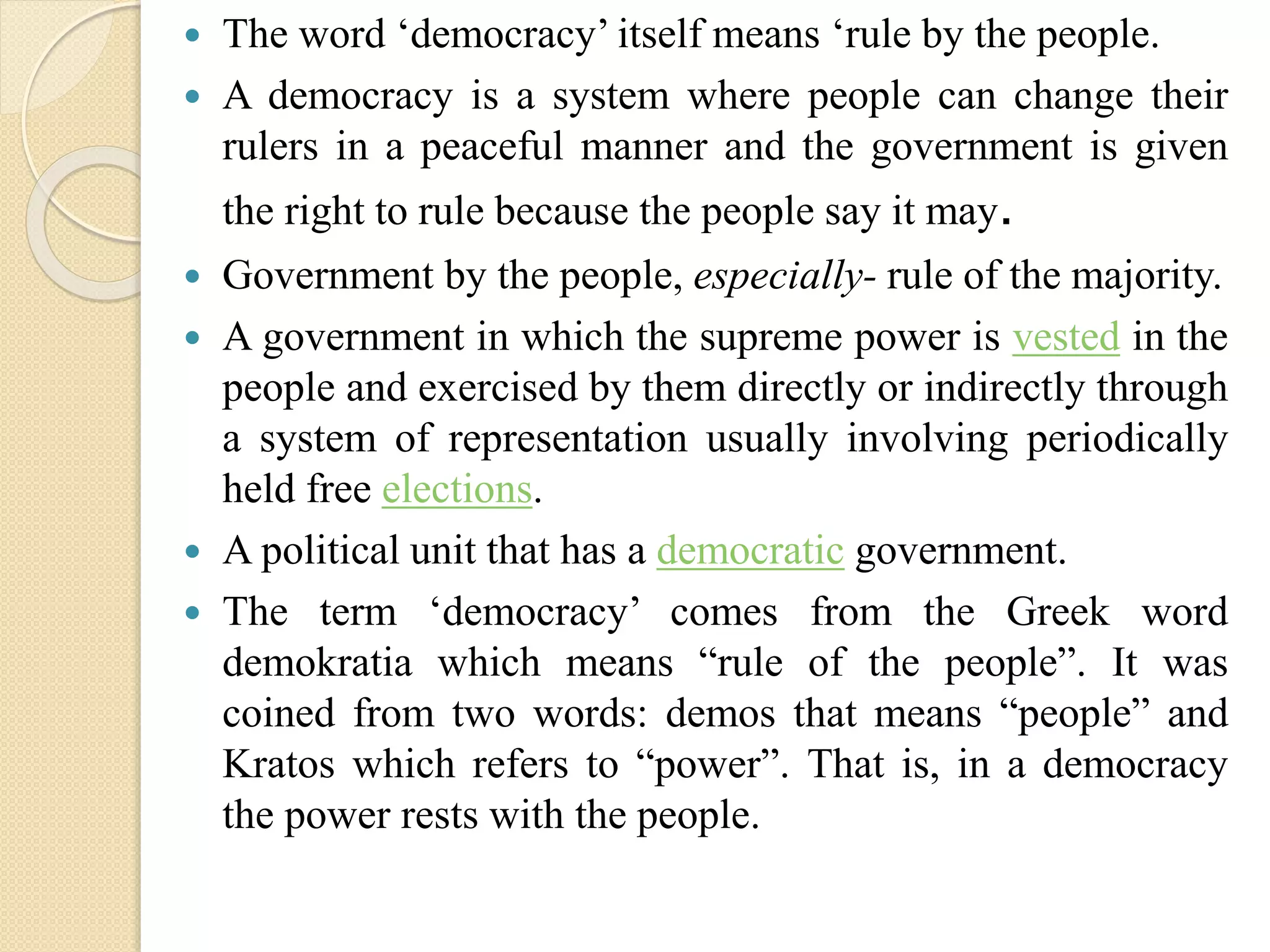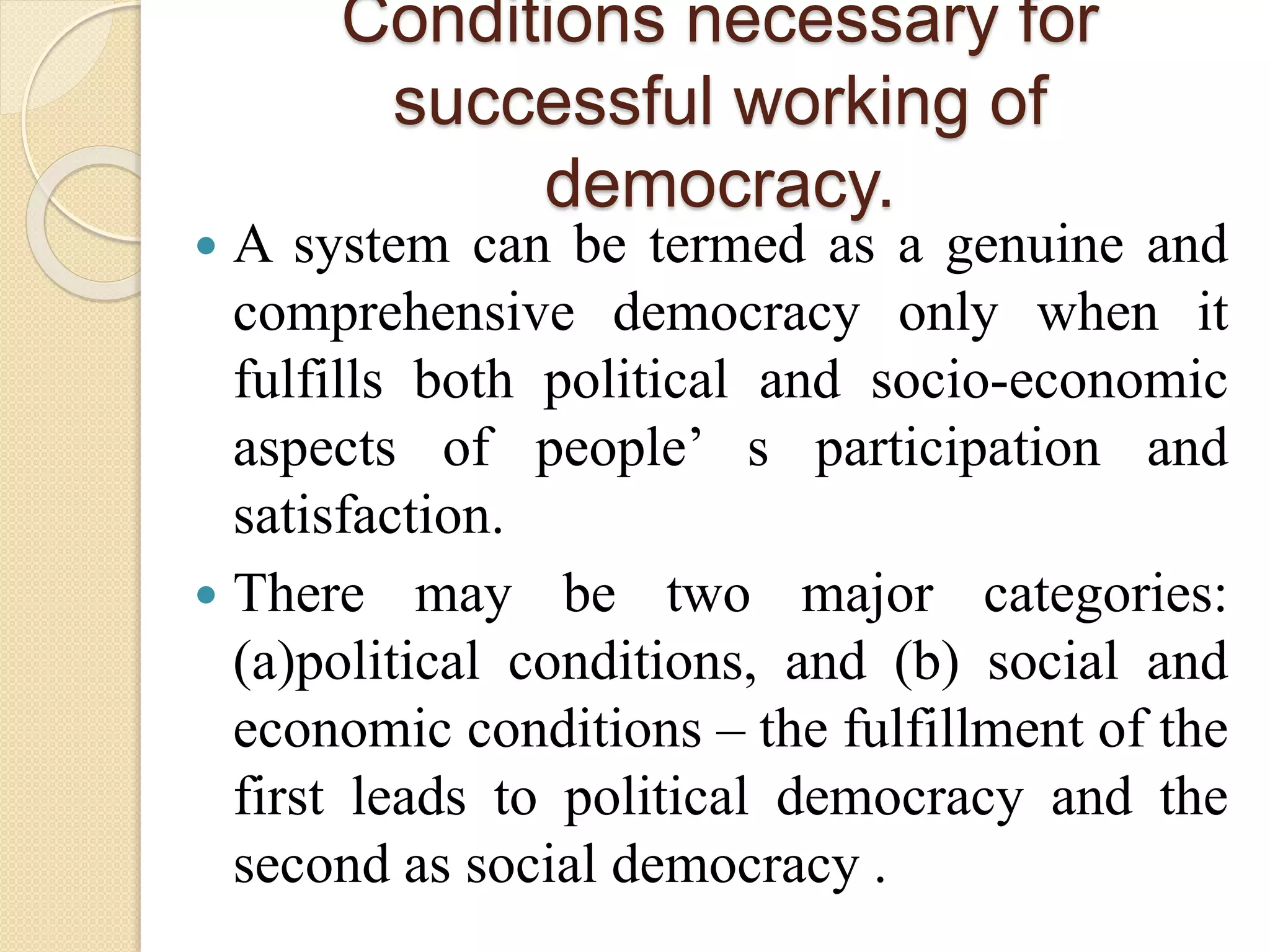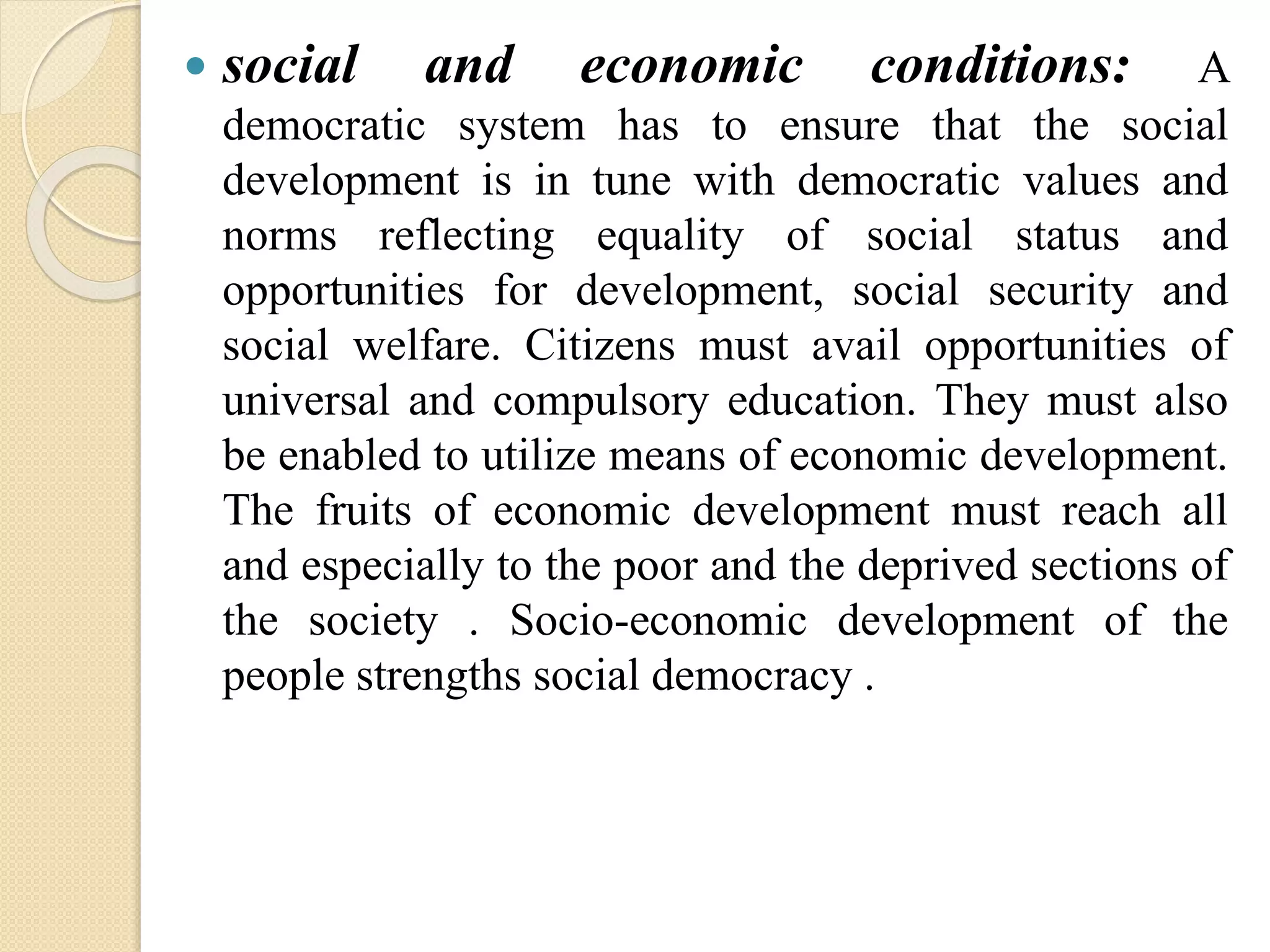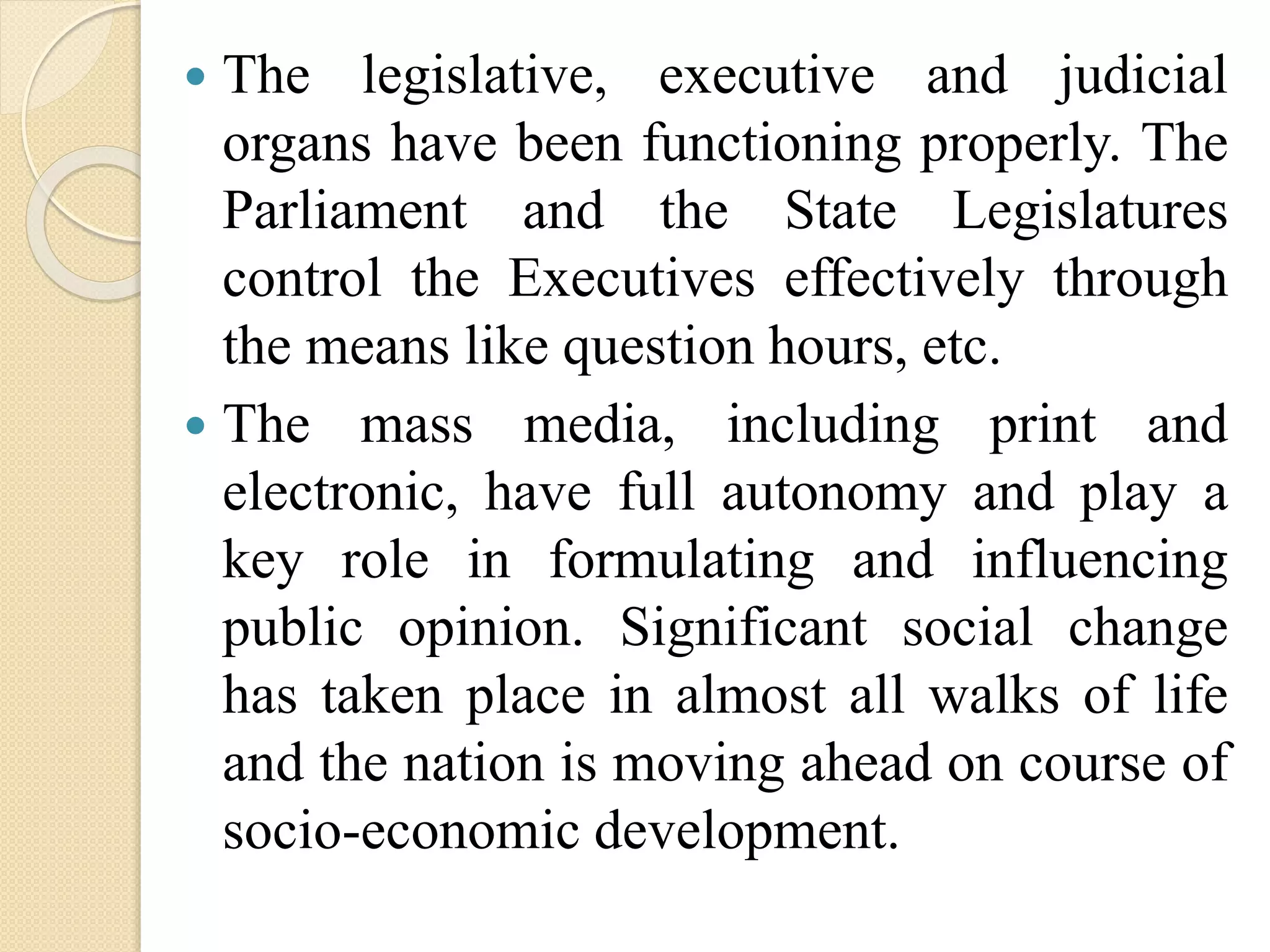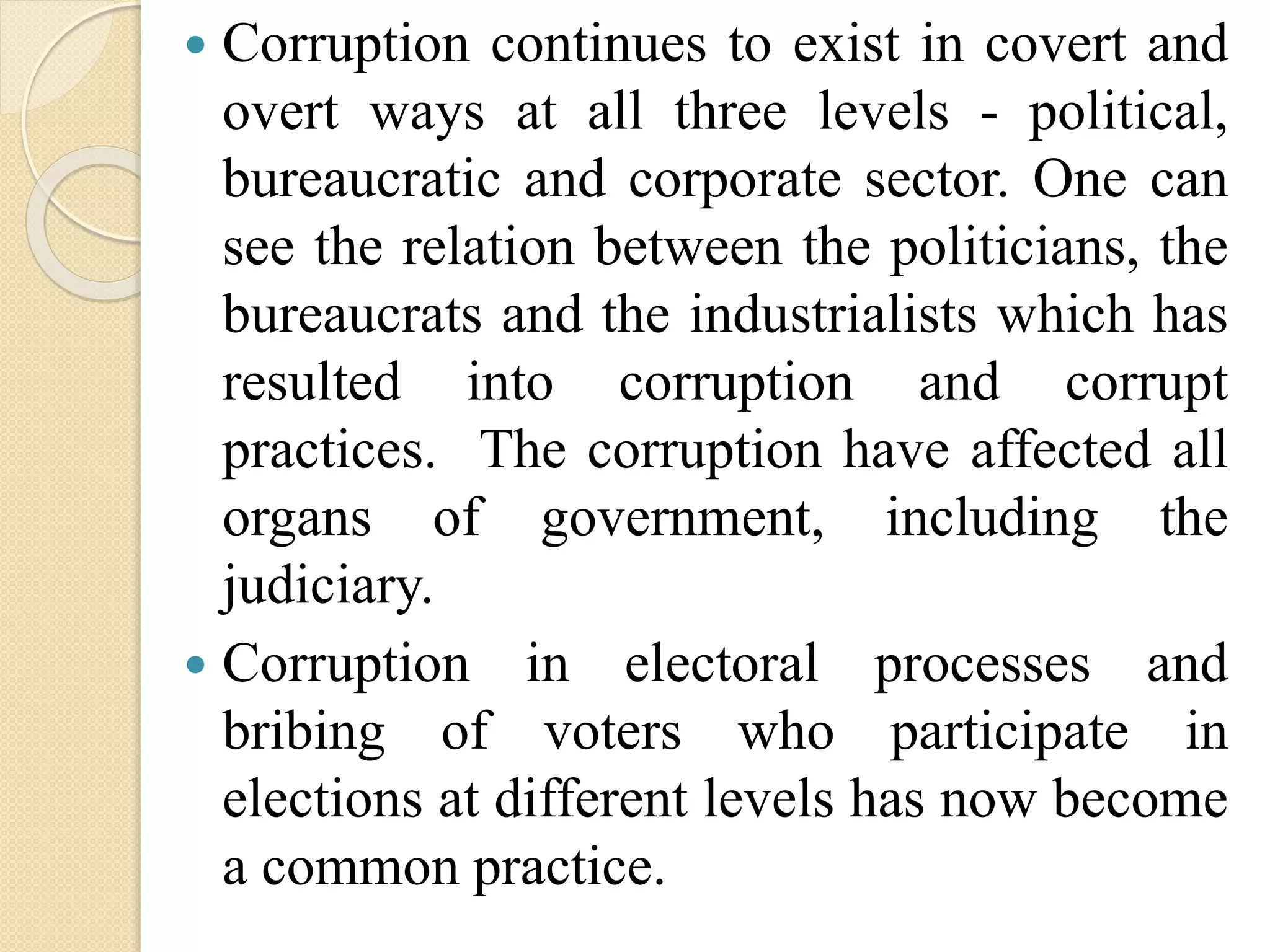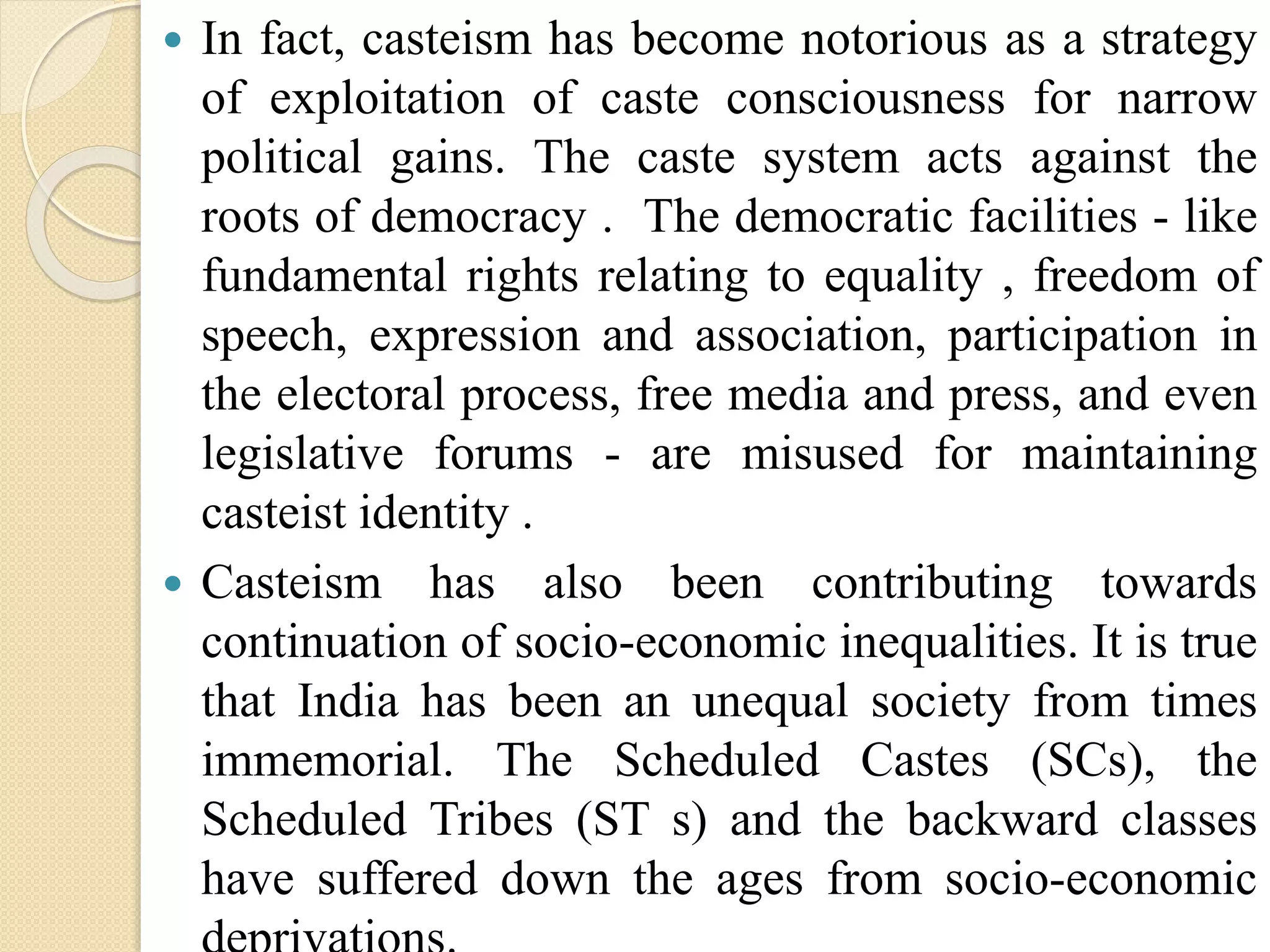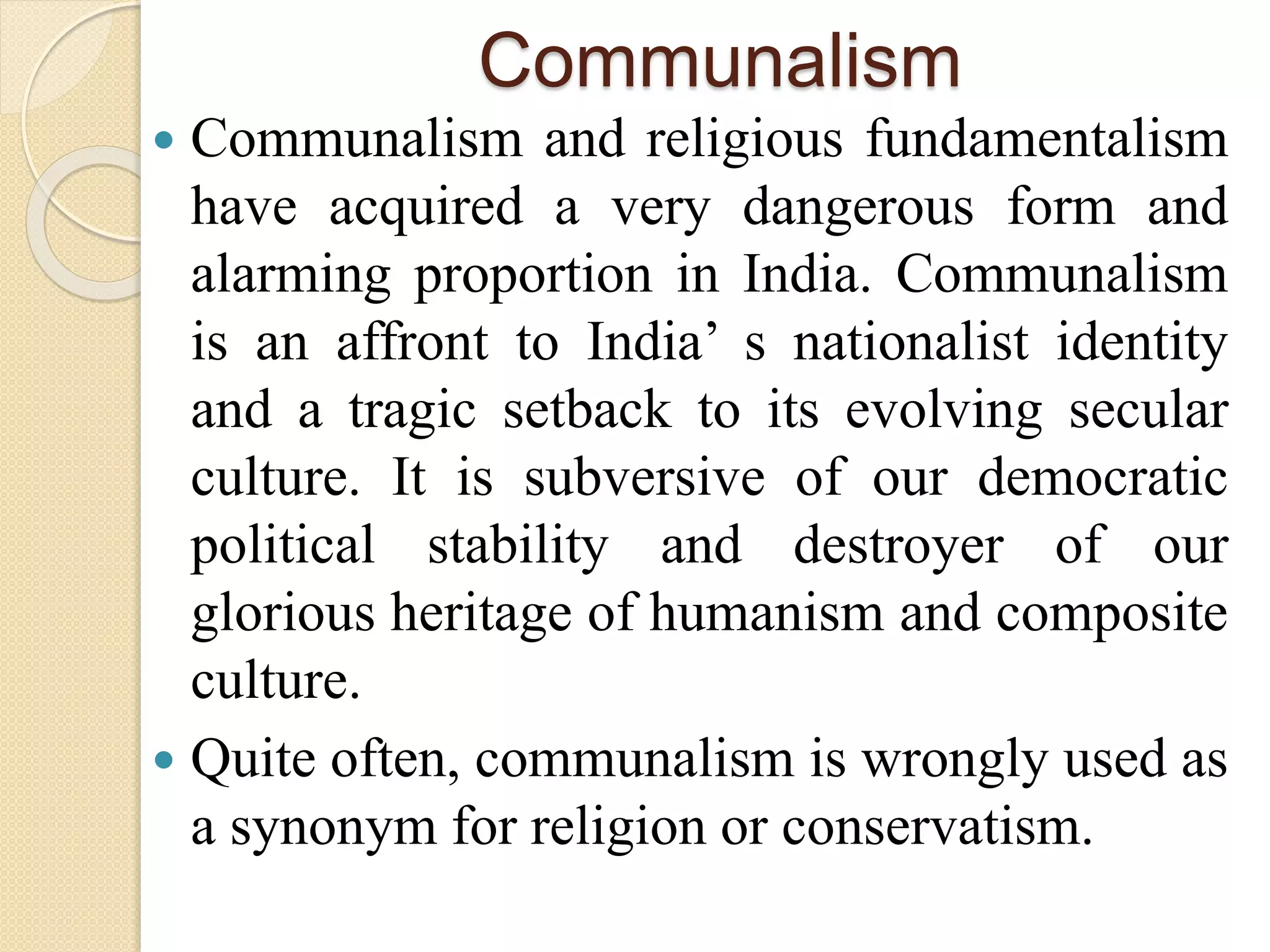The document discusses some key challenges facing Indian democracy, including corruption, casteism, communalism, and regionalism. It notes that while India has successfully established a democratic system with elections and civil liberties, corruption is widespread in politics, business, and bureaucracy. Casteism continues to create inequalities and is sometimes exploited for political gain. Communalism and religious fundamentalism also threaten secular ideals. Regional disparities in development have led to separatist movements in some areas seeking more autonomy or secession. Overcoming these challenges is important for strengthening India's democratic system.

